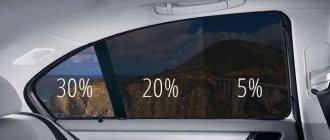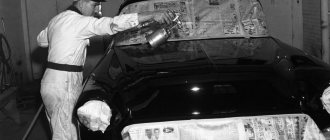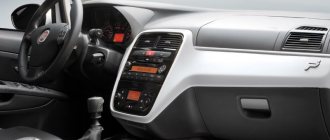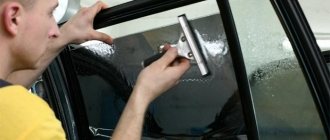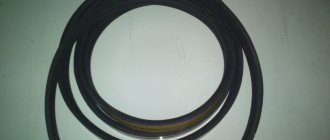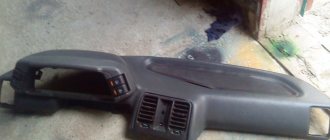It may be necessary to remove tint from car windows for various reasons. One of them is to increase the level of light transmission in accordance with legal requirements.
In order to remove coatings from glass, various methods can be used, including heating and exposure to chemical reagents.
We'll tell you how to remove tinting from car windows in this article.
When to remove old tint
Today, many car owners use tinting. It allows you to partially hide visibility, and passers-by cannot fully see what is happening in your salon. Tinting is a kind of film that is glued to glass. The film must be glued using special automotive adhesive. You cannot use construction film, otherwise, if replacement is necessary, the film will be difficult to peel off from the glass.
But the film needs to be changed periodically. There may be enough reasons for replacement. If you begin to notice defects in the film, bubbles, or if the glass accidentally cracks, it’s time to replace it. You need to decide whether to remove the vinyl yourself or go to a service center.
Removing tint is a complex process. You need to approach it as seriously as sticking. There may be several reasons for removing old tint. Here are some examples of the most basic ones:
- Film burnout, visible external defects . This film needs to be removed, since it is of no use anyway, and it spoils the appearance. The reason for the appearance of bubbles on the tint may be the use of low-quality glue.
- Very dark film . This film must be replaced, otherwise you may be fined by the traffic patrol. The light transmittance in glass should not be lower than 75 percent.
- A crack appeared on the glass . It is simply dangerous to drive with such glass; this is also the reason for replacing the glass and tinting.
Reasons for removing tint film
Before removing the tint yourself, a person looks for products that remove the film almost instantly. There are many methods, each of which can be applied to different situations. That is why it is first worth understanding the reasons for removing the film coating.
The reasons are as follows:
Wear. Regardless of the operating conditions of the car, sooner or later the film becomes unusable. Its edges are bent, or a large section is completely removed. A poorly glued coating often bubbles. This often forces drivers to rip off the tint.
Non-compliance with standards. It is known that the rear windows of a car are allowed to be completely tinted. The front windows and those located on the sides of the doors have restrictions on transparency. For windshields, a film of at least 70-75% transparency is allowed.
Necessity. Sometimes cracks appear on the glass that require repair. In this situation, all that remains is to remove the film.
Driver's desire. Over time, a person may stop liking the tint or want to change the degree of darkness.
Sometimes a car enthusiast buys a used car and sees that there is tinting on the windows. Many people try to immediately remove the old coating and renew it.
What not to do when removing old tint
Many drivers make mistakes when removing tinting film from glass. We'll tell you what to avoid when removing vinyl:
- Do not use very sharp objects. They can damage the glass and leave scratches. Sharp objects are needed only to pick up the edge of the film. But don't use them to rip off all the vinyl. In the worst case scenario, you will be left without glass and may be cut by glass shards.
- Do not overheat the film. If the vinyl starts to melt, it will leave marks that are nearly impossible to remove. As a result, the glass will have an unsightly appearance and you will not be able to re-tint it.
- You cannot use the heating method if it is frosty outside. Cold glass and hot air are incompatible; the glass can immediately burst.
- Handle chemicals carefully. Under no circumstances should you work without personal protective equipment. Wash glass thoroughly after using chemical or aggressive agents. Try to prevent them from coming into contact with your skin.
What's the result?
Removing tint is not easy, so it’s best not to start doing it unless absolutely necessary. If the film darkens within the normal limits prescribed by law and there is no visible damage, you can do without removing it. If you decide to remove the coating yourself, you must be careful not to damage the glass surfaces.
Sources
- https://avilon.ru/articles/kak-snyat-tonirovku/
- https://ProAvtoMaster.com/remont/kak-snyat-tonirovku
- https://seite1.ru/kuzov/kakimi-sposobami-mozhno-udalit-tonirovku/.html
- https://InfoKuzov.ru/plenka/rastonirovka-stekla
- https://nahybride.ru/salon/kak-snyat-tonirovku
- https://riverautolab.ru/articles/kak-samomu-snyat-tonirovku-s-avtomobilya/
- https://yborka.online/uborka/steklo/kak-ubrat-tonirovku
- https://www.OZON.ru/club/article/vsem-vyyti-iz-sumraka-kak-snyat-staruyu-tonirovku-so-stekla-39665/
How and with what to remove tinting from car windows
Not all car owners know how to properly remove old window tint. We will give an example of methods that can be applied. These are proven methods that allow you to remove old film without leaving any traces. But not all of them are safe, and you need to act with extreme caution.
The safest thing to do is contact a service center where technicians can quickly remove the tint from the glass. But this is not always possible, and sometimes you have to act on your own. There are plenty of ways to effectively remove tint. But you need to be patient and have some tools. If you learn how to remove vinyl yourself, you won’t need to go to a service center for these reasons.
What is written in the traffic rules?
Before looking for ways to remove tinting from glass, you should familiarize yourself with the traffic rules that regulate the use of this element. First of all, you need to understand that tinting is permitted, including the use of special darkening films. All types of mirror tinting are prohibited, but there are certain features, depending on their location.
There are restrictions on dimming levels. The light transmittance on the windshield, as well as on the glass of the front door of the car, should be 70% or more. There are no regulations for the rear window and side windows of the rear doors, so any type of tinting with any level of darkness can be used here. You can install curtains and blinds on them.
A tint installation in the form of a transparent colored stripe is added to the top of the windshield. Its width should be no more than 14 cm. There are no exact rules that would regulate its capacity. In practice, you can set any level of darkness as long as the width does not exceed the permissible value.
Methods for removing tint
Tinting helps to partially get rid of prying eyes. Unfortunately, there are reasons why the tint has to be changed. Many drivers prefer not to contact the service center, but to make the replacement themselves. You can replace the tint yourself, the main thing is to listen and strictly follow all the recommendations.
There are several methods of removal, but the most common are with and without heating. These methods have long been tested in practice and will help you effectively remove tinting film from glass. The most important thing is to act quickly and clearly.
Cold tint removal
In order to remove the film without heating, you need to find a sharp knife, dishwashing liquid, liquid soap, solvent or acetone (can be replaced with glass cleaner), rags and a scraper. Once you have found everything you need, you can start removing.
Tools needed for cold tint removal:
- Sharp knife
- Detergent (soap solution is allowed)
- Acetone (any solvent can be used)
- Clean rags
- Scraper
Process algorithm:
- We take a knife and, as carefully as possible, so as not to damage the glass, we grab the top edge of the film. Gradually, slowly, begin to pull the film down.
- Be sure to wipe the glass and film with detergent every 10 centimeters. For greater convenience, use a spray bottle. Once the film has been completely removed, remove any remaining residue using a scraper.
- Wipe the glass with acetone or detergent, remove any remaining film, and wipe dry.
That's it, the film is removed.
The nuances of the process of removing the tinting film using the cold method.
It is important to remember that a sharp knife is only used to pick up the edge of the vinyl. Do not peel off all the film with a knife. It should come off easily if everything is done carefully and correctly. If suddenly the vinyl is firmly attached and does not want to lag behind the glass, try warming it up. Warming up helps neutralize the glue particles.
How to deal with problematic film
When dismantling tinting, several problems arise:
Can't pick up the edge
Sometimes the film coating can be difficult to pick up with a knife. This often happens with old tint done more than two years ago. There is a simple life hack for this problem: you will need a household detergent and a spray bottle.
You need to pour the product into a spray bottle and spray along the top edge of the glass. After 10-15 minutes, the solution will penetrate between the film and the glass, and you can pry it off with a knife or other sharp object. Next, tear off the film using the cold method. You can also spray the tear strip constantly with a spray bottle to make it less likely that glue will remain on the glass.
The tint doesn't come off in any way.
Sometimes it happens that the tinting sticks tightly to the glass: it cannot be picked up even with the thinnest knife, and heating the film to high temperatures does not help. As a rule, this is due to the fact that the tinting was done using construction adhesive. It costs less than a car, so some workshops save money. In the future, contact a reliable auto repair shop, and to remove problematic tint, you will need an ammonia solution, which removes even the most stubborn adhesive.
Ammonia solution, or ammonia, is sold in canisters in industrial companies and small bottles in pharmacies. They need to process the entire surface of the glass. To do this, use a sponge and latex or rubber gloves. You can also pour the solution into a spray bottle.
After treating with ammonia, cover the entire tint film with cellophane. A large garbage bag, cut in two sides, is suitable for this. Cellophane will not allow ammonia to erode; it will be absorbed into the film and dilute the glue.
After 10-15 minutes, the film will begin to soften and bubbles will appear on its surface. Now it can be easily removed, the remaining glue can be washed off with water, and in difficult cases, additionally use a solvent.
Important: before applying the ammonia solution, protect other surfaces of the car with cellophane film, and after completing the work, wipe the glass with alcohol or use an alcohol-containing cleaning product.
Removing tint using heat
Removing tint using heating. This method is faster and easier, and safer, since the risk of damaging the glass is reduced. To do this you need a hairdryer and a person who will help. Algorithm of actions:
- Turn on the hairdryer and start heating the glass.
- An assistant grabs the top edge of the film and peels it off the glass a little. To do this, you need to take a sharp tool and carefully cut the edge of the film so as not to damage the glass.
- Try to keep the temperature hot, at least 40 degrees Celsius. To do this, the hair dryer must be turned on at all times. But make sure that the temperature does not rise higher, otherwise the film may melt, and then you will not be able to do anything.
- As soon as the film is completely removed from the glass, rinse it thoroughly with detergent and wipe dry.
This method is more effective, but the main difficulty is that it requires an assistant, and it is not always possible to call a person.
Main nuances:
- The method is not suitable for frosty weather. If you heat frozen glass with hot air, it may break.
- Do not overheat the film; if it melts, marks may remain on the window that cannot be removed.
- The film can only be removed when it has completely warmed up.
- After the hot method, glue remains on the glass. You can remove it using any solvent, after which you need to thoroughly wash the window.
How to Remove Tint from a Car Window Using Newspaper and Soapy Water
A proven method for removing film, tested over the years. At first glance, everything is simple. Newspaper and soapy water are something that has been used in everyday life for a very long time and has good results. Tools needed for this:
- Newspapers
- Soap
- Water
In fact, there is nothing complicated. Even a person who does not have the skills to replace tint can cope with this. The main thing is to do everything clearly and carefully so as not to damage the glass itself.
Step-by-step instruction:
- Step 1. First of all, cover the window with newspapers. You need to cover it on the side where there is film. But first thoroughly moisten the newspapers with water. It is very important that they adhere to the film.
- Step 2. Leave the newspapers on the film for at least an hour, and you can go about your business.
- Step 3: Start peeling off the newspaper. If everything went correctly, the newspaper will come off along with the film.
This method will help you quickly and effectively remove old tint from glass. But after this, the windows need to be thoroughly rinsed and wiped dry.
The subtleties and nuances are that this method is only suitable for sunny weather. If it's raining outside, newspapers and soapy water won't help you. And one more thing - you cannot know for sure whether the film is firmly stuck to the glass. The newspaper method can be time consuming.
Removing Old Vinyl Using Ammonia
Ammonia or ammonia is used not only for medical purposes, but also in everyday life. With its help, you can quickly and effectively remove old film from glass. Ammonia is very toxic and produces harmful fumes. You need to take care to protect your face, hands and respiratory organs. When working with ammonia, you need a respirator and gloves. In order to remove the film with ammonia, you need to apply it to the entire surface. Cover with a bag and leave for a few minutes. Then carefully remove. The method is very effective and works quickly.
An original method for removing old vinyl from glass
This method, despite its strangeness and unusualness, is very effective. Not many drivers dare to try it, but if other methods don’t help, then it’s worth a try. This method is one of the most difficult, and if you are peeling off the film for the first time, it is better not to try it.
First you need to remove the glass with film. Dismantling must be done extremely carefully so as not to damage the glass. Once removed, gently place in a bath of warm water. Once the windows are down, gradually add water. It is important that the water is not hot. And this method will not work if it is winter and frost outside. As soon as you put cold glass after frost into a warm bath, it will immediately burst.
As a result of contact with warm water, the adhesive substance is neutralized, and the film can be easily removed. All you have to do is install the glass in place.
Removing tint using alcohol
Alcohol is a chemical that can neutralize glue. If you take ammonia, it is an aggressive substance from which you need to cover the remaining panels of the car. Alcohol does not have a detrimental effect on paint, panels, or seats. The advantage of alcohol is that it quickly evaporates and does not leave a sharp, unpleasant odor and is not so harmful to the skin and respiratory organs.
Alcohol has one drawback that is significant for many - its high price.
Other Vinyl Removal Methods
It is possible to remove unnecessary vinyl without affecting the glass yourself. There are quite a variety of ways to do this:
Mechanical method. To implement this, you need to stock up on a sharp object with which you will peel off the film. Using an object, grab the edges of the film. After that you start to pull. Do not pull sharply or jerkily. This method is not rushed. If you pull too sharply, traces of glue will remain on the windows, which will be difficult to wash off later.
After you have smoothly pulled off the film, wash the remaining residue with warm water and soap, then wipe the glass dry.
Removing tint using gasoline . In general, when removing a tinting film, a solvent is used, but if you don’t have it on hand, you can use gasoline. But gasoline must be diluted with water so that it is not too concentrated and does not leave streaks. The principle of operation is approximately the same as with ammonia. After the film peels off, you need to wash the glass with soapy water and warm water.
Anti-rust agent, WD-40, “anti-rain” and “anti-glue ” can also rid you of old tint film. Some drivers tried to remove vinyl using Coca-Cola. This versatile drink has also proven to be an effective remedy.
How to deal with problematic film
Unfortunately, when dismantling the old film, not everything goes as smoothly as we would like. Sometimes the tinting does not want to come off, or remains on the glass in pieces that, as a result, cannot be peeled off. Here is an example of the most common problems:
- I can't tear off the edge of the film . If the tinting was done a long time ago, it is firmly stuck to the glass, and you are unlikely to be able to remove it with a knife, even a sharp one. There is a way out. You just need to try a spray bottle (in other words, an atomizer). Fill the bottle with detergent and spray it on the glass. It is important that it covers the entire surface. After a certain time has passed, preferably half an hour, take a sharp knife and try to carefully tear off the edge of the film.
- Neither method helps, and the tinting does not lag behind . This only happens if the tinting is firmly attached to the glass. If you did tinting more than two years ago, you may not expect a different result. Another reason why tinting does not lag behind the glass is the use of special glue. Construction adhesive provides increased strength. But in this situation there is a way out. Any glue, even the strongest one, dissolves the ammonia solution. You just need to treat the glass with it, and the film will gradually begin to peel off. It can be bought at a pharmacy or in industrial warehouses in canisters. It is important to apply ammonia to the entire glass so that there are no missed spots. Remember to protect your hands and face. If you use a spray bottle, be sure to wear a protective mask and latex or any other durable gloves. After the film has been processed, cover it with a bag. Let it sit for about half an hour, forty minutes. As soon as you see bubbles on the film, it means it has begun to soften. After the film has softened, take a sharp knife and carefully begin to remove the film. The last step will be to remove the residue, wash the glass and wipe it dry.
How to remove tinting from a rear window without damaging the heating
As practice shows, removing old tinting from the rear and front windows is much more difficult than removing film from the side windows. In addition, some of the rear windows are heated, and when removing the film it is important not to touch or damage it.
There are ways to carefully remove film from heated glass. Usually heating is a set of thin threads. When you remove the film, do it smoothly, do not jerk sharply. For such glasses, only a method using heat and a soap solution is suitable. By the way, the glass heating system can help. You just need to turn it on if you don’t have a hairdryer. The heat softens the adhesive and the film releases freely from the glass.
The main nuance of the hairdryer method is that you cannot heat the glass at a low temperature. If it’s winter and frost outside, it’s better to postpone replacing the tint or go straight to the service center.
The second method, no less effective than the heating method, is the use of ammonia. As we have already written, ammonia can soften even the strongest glue. If you apply ammonia, cover the glass with a bag, then start peeling it off, the film will come off easily.
Features of the procedure for removing old film
Usually, under the influence of elevated temperatures, the glue dries and the material firmly adheres to the surface. If you simply tear off the foil, you can scratch or damage the glass, and glue stains will remain.
There are several methods for removing film from window glass that are successfully used to carefully remove the coating:
- chemical - they use products, but in some cases they are ineffective, it will not be possible to completely wash the coating;
- mechanical – separated using physical force, using scrapers or other available materials, the disadvantage is that the surface of the window can be damaged;
- combine both methods, acting sequentially: treated with a chemical solution and then cleaned off;
- other methods (steaming, using newspapers, soaking).
Some types of coating break into small, sharp pieces. Typically, stained glass and advertising films are made from this material. During removal, they are moistened generously with water.
How to remove remaining glue from glass
When you remove the old tint film, there may be traces of adhesive left on the glass. They definitely need to be removed. First of all, this is safety precautions, especially when it comes to the windshield and rear window. Well, and the aesthetic appearance. Agree, it’s not very nice if the car windows are dirty, with traces of old glue.
It can be removed, but it will take time. There are several effective, reliable ways to remove old glue from glass. To do this you need to stock up:
- Water . Water helps to loosen any remaining adhesive and also helps to wash the glass after it has been completely cleaned.
- Acetone or paint thinner . Despite its effectiveness, it is far from a harmless method. And a substance such as acetone does not like glass surfaces, and can damage a car window.
- Gasoline . Gasoline helps remove any glue residue from the glass. But it cannot be used in its pure form; it must be mixed with water.
- Alcohol . A fairly effective and harmless method. It does not negatively affect the glass and does not cause harm. The only negative is that the smell is too volatile; when working with alcohol, you need to wear protective equipment.
- Ammonia . An effective product that copes even with old, dried, strong glue. But you need to protect yourself from ammonia both yourself and the surfaces of the car. Do not forget that ammonia is very toxic, and if safety precautions are not followed, you can be poisoned by the fumes. When working with ammonia, a respirator and gloves are required.
As you can see, there are ways, and quite effective ones. The main thing is to act carefully, and if you work with chemicals and harmful substances, do not forget about personal protective equipment.
What not to do
Before we talk about removal methods, it’s worth saying how not to do it. It seems like it's easy to remove the coating. In many ways, this is true, but it is better to follow a few rules:
- Do not use heavy sharp objects such as a knife or scissors. They can leave scratches on the glass and tear off the film in shreds.
- Do not use strong chemicals. Acetone or another strong substance dissolves the coating rather than cleans it, that is, it leaves it firmly on the glass. They can also easily damage body paint or rubber seals.
